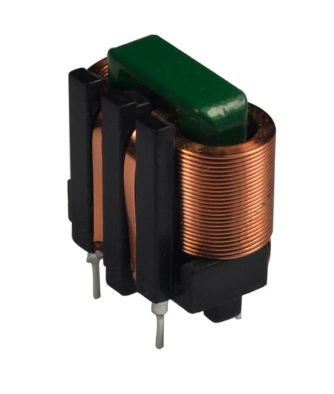Warning: Undefined variable $articleindexname in D:\wwwroot\www.resistorsupplies.com\moban\en_inc\article.php on line 46
> The Impact of Inductance on Signal Integrity in High-Frequency Circuits
The Impact of Inductance on Signal Integrity in High-Frequency Circuits
In high-frequency circuits, inductance plays a very significant role in signal integrity. Here's a breakdown of its impact:
Understanding the Challenges:

Parasitic Inductance:
Every conductor, including PCB traces, wires, and component leads, possesses inherent inductance, known as parasitic inductance.
At high frequencies, even small values of parasitic inductance can have a substantial impact on signal behavior.
Signal Distortion:
Signal Reflections: Inductance can cause signals to reflect back along the transmission line, leading to distortion and errors.
Ringing: Inductance can cause signals to oscillate or "ring," which can disrupt digital signals and increase noise.
Impedance Mismatches: Inductance can alter the impedance of a circuit, leading to mismatches that cause signal reflections and losses.
Inductance opposes changes in current. In high-frequency circuits, where signals change rapidly, this opposition can lead to:
Electromagnetic Interference (EMI):
Inductors generate magnetic fields. At high frequencies, these fields can radiate and interfere with other circuits, causing EMI.
Conversely, high frequency magnetic fields from other sources can induce unwanted currents in inductors.
Voltage Spikes:
When a current flowing through an inductor is rapidly interrupted, a large voltage spike can occur. This can damage components and disrupt circuit operation.
Mitigation Strategies:
To minimize the impact of inductance on signal integrity, engineers employ various techniques:
Minimize Loop Areas:
Reducing the area of current loops minimizes inductance.
This involves keeping signal and return paths close together.
Use Ground Planes:
Ground planes provide a low-inductance return path for signals, reducing loop areas and minimizing signal reflections.
Control Impedance:
Carefully controlling the impedance of transmission lines minimizes reflections.
Decoupling Capacitors:
Decoupling capacitors provide a low-impedance path for high-frequency currents, reducing voltage spikes and noise.
Shielding:
Shielding can help to contain magnetic fields and minimize EMI.
Component Selection:
Choosing components with low parasitic inductance is crucial.
Careful PCB Layout:
Short traces, optimized via usage, and good layer stacking are all very important factors.
Simulation:
Using simulation tools to model and analyze signal behavior can help identify and mitigate potential signal integrity problems.
In essence, managing inductance is a critical aspect of high-frequency circuit design. By understanding its impact and implementing appropriate mitigation strategies, engineers can ensure that signals are transmitted reliably and with minimal distortion.
Email us
Warning: Undefined variable $pronamepx in D:\wwwroot\www.resistorsupplies.com\moban\en_inc\article.php on line 57
Fatal error: Uncaught TypeError: count(): Argument #1 ($value) must be of type Countable|array, null given in D:\wwwroot\www.resistorsupplies.com\moban\en_inc\article.php:57 Stack trace: #0 D:\wwwroot\www.resistorsupplies.com\article.php(162): include() #1 {main} thrown in D:\wwwroot\www.resistorsupplies.com\moban\en_inc\article.php on line 57
